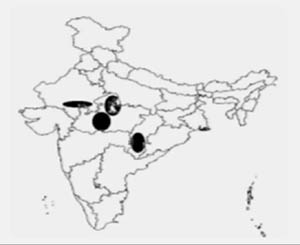|
Industrial
Carbon Credit in Un-organized Sector - VSBK Technology for a Giant Move Shalini Prakash shalini@sdalt.ernet.in The Vertical Shaft Brick Kiln (VSBK) is an energy efficient technology for
fired clay brick
production; the technology was originally developed in China. (Refer
to http//:www.vsbkindia.org for more details on the
technology) The technology was introduced into India in 1997 in an
action research mode, with financial support of the Swiss Agency for
Development and Cooperation and technical assistance from China.
With subsequent modifications and technological up gradations to
suit Indian conditions, the VSBK technology has established itself
in India and now from last few years TARA Nirman Kendra,
the affiliate business company of Development Alternatives, is
widely disseminating it in the various regions in India with the
overarching objective to maximize environmental benefits and CO2
savings in the brick sector in India. Industrial Carbon Credit Incurred from Clean Development Mechanism (CDM) The energy usage for the construction sector in India is a major factor contributing to the CO2 emissions. About 80% of the energy input from building material production is on account of cement, steel and bricks. Brick sector claims up to 17% of the total construction sector CO2 emission other than cement, lime. Through the Clean Development Mechanism as outlined in the Kyoto Protocol of the UNFCCC, projects that contribute to the reduction, avoidance or sequestration of emissions reductions stand to earn from the carbon (or greenhouse gas) offsets generated by the operation of their project activities. Further, if such a project is a small-scale project, then there are added advantages in its approval, monitoring, verification and certification. A "VSBK cluster of 70 kilns in four regions" ( regions have been hatched in the map) is capable of generating carbon offsets of approximately 25,000 tonnes of CO2 annually according to an estimation done by Climate Change Centre, Development Alternatives. This VSBK cluster of 70 kilns can claim carbon credit of around 1.2 million INR per annum at a minimum rate of 4 $ per tonnes of CO2. These added benefits also would interest the new generation entrepreneurs, desirous of investing in the VSBK technology. There are efforts going on to sell these offsets generated by the VSBK cluster of 70 kilns. The efforts are to raise upfront capital investments for new entrepreneurs who would like to invest in the VSBK technology and operate the business to conform to environmental performance guidelines. These guidelines will be issued as draft national standards for VSBK by the Central Pollution Control Board (CPCB). This initiative is promoted by the technology provider TARA Nirman Kendra jointly with CDM project development facilitator Climate Change Centre, Development Alternatives. q
|
